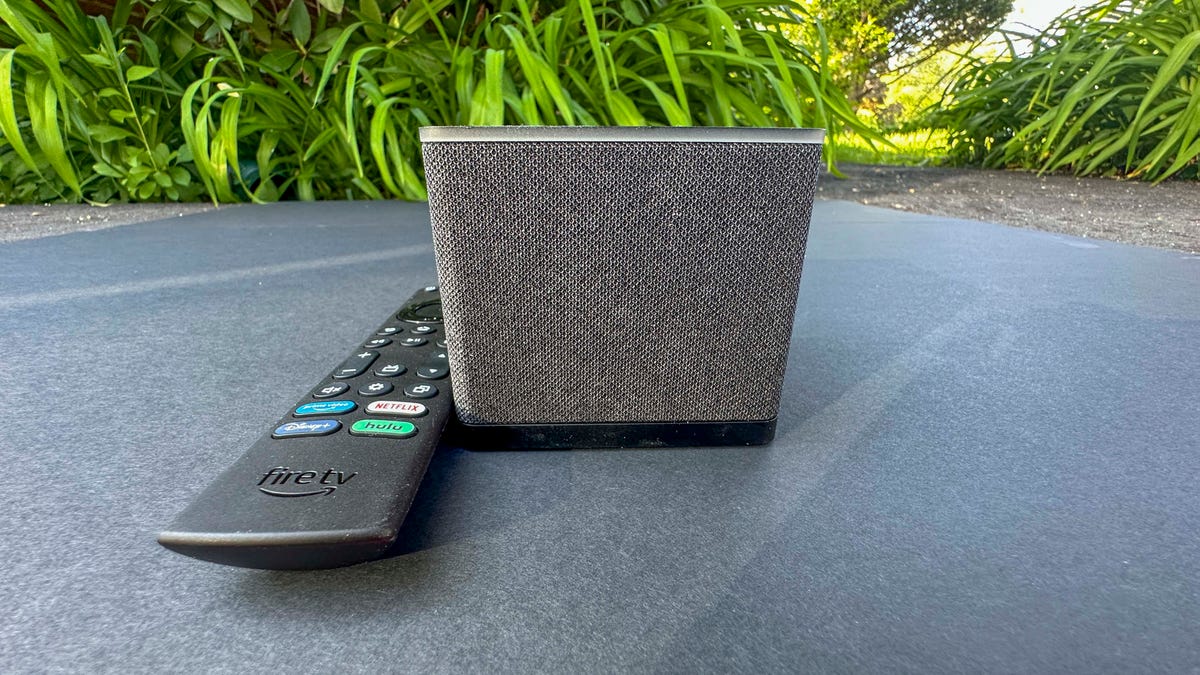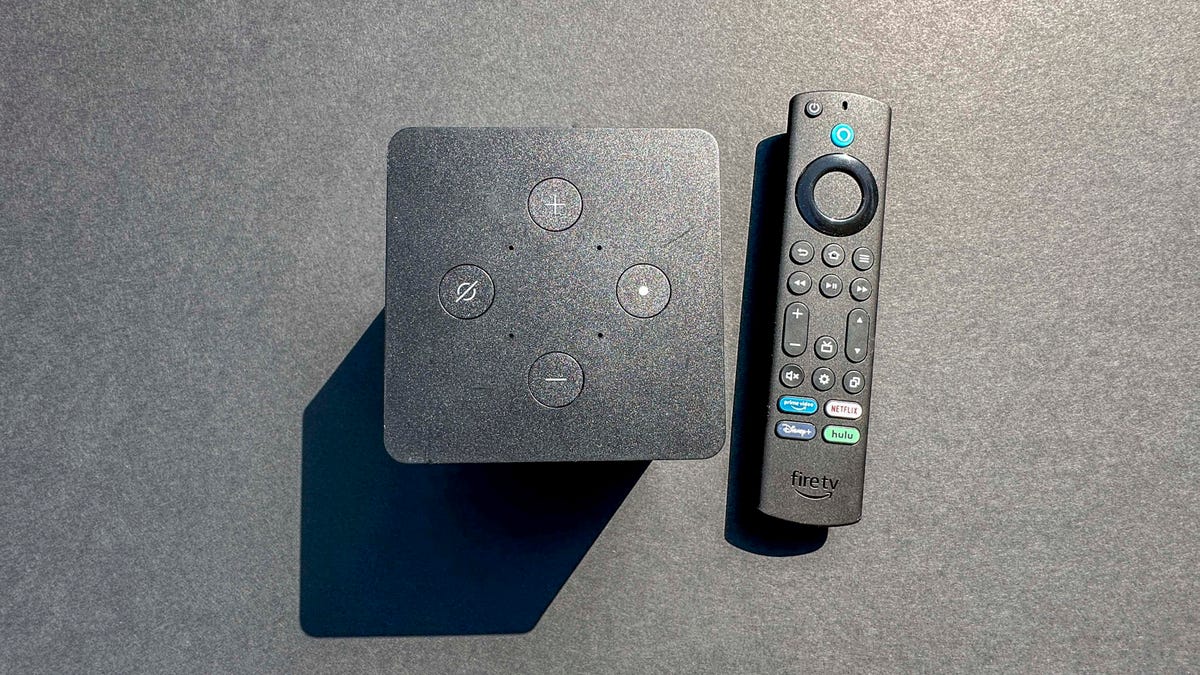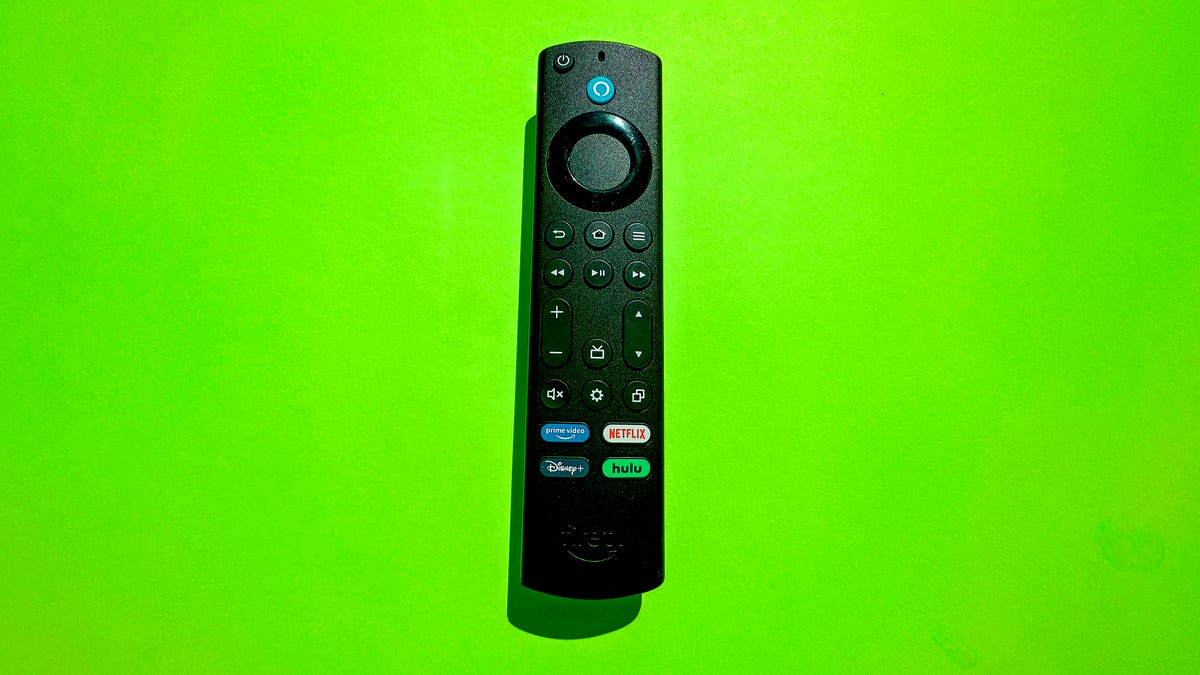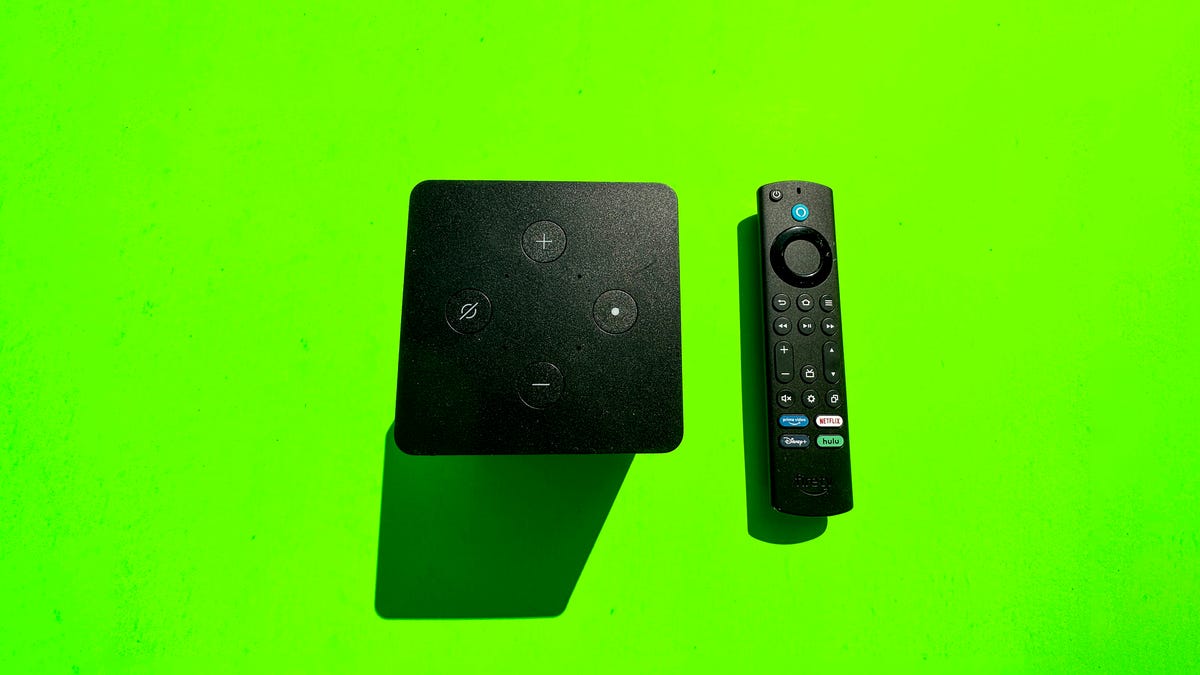With the advent of smart TVs and voice assistants, universal remotes have all but disappeared. Why would you buy a separate clicker when you can control everything with Alexa or your TV remote? Because plenty of people still need more than a basic controller, that’s why. Millions of Americans subscribe to cable TV and/or have an AV system that can’t be controlled by a TV remote alone. The original Amazon Fire TV Cube was a bridge between the new reality of streaming and the smart home, and the need to control third-party devices. It’s been replaced by a second-generation Fire TV which includes plenty of high-end features, such as a faster processor and 4K upscaling.
There’s a lot to like about the Fire TV Cube. Its small, boxy design is both cute and sleek, and it looks good in a TV cabinet. Its built-in mic and speakers are also capable of controlling a TV using just Alexa. To top it all off, the Cube also connects directly to a cable box so Alexa can control that, too. Pretty sweet, right?
In theory, yes. But after spending untold hours over the course of five months testing two different Fire TV Cube units on three separate TVs, I’m sad to report that the new Cube just didn’t work as advertised. Sure, it performed admirably as a regular streaming player, as it lets you download and watch just about any content you’d want. But people buying the Cube might reasonably expect the full smart-home experience, and this is precisely where the device faltered
In my testing, Alexa consistently struggled to reliably complete voice commands, while the Cube as a whole regularly encountered glitches when attempting to control other connected devices. When everything worked as it should, the Cube felt almost magical. But too often, I was left begging Alexa to follow the commands I gave it. The end result is a product that offers a tantalizing vision of the future of smart TVs but is ultimately so frustrating to use that I wanted to throw it across the room.
A pretty package

The Cube, true to its name, has always been a square box that’s made to sit by your TV. The first two generations of the Cube were made entirely of plastic and featured sharp, straight lines.
The latest version of the device comes wrapped in a mesh-like fabric with rounded edges that gives the Cube more of an upscale look and feel. On top of the box, you’ll find Alexa mute and volume controls, as well as a Select button. To control anything else, you’ll need to use your voice, or the included remote.
On the back of the Cube, you’ll find space to plug in a USB stick; an ethernet cable; an optional IR extender for controlling a device that’s in a cabinet; plus two HDMI connectors — an output to connect to your TV and an input to connect from a cable box or other device. It’s easy to set up, too: I had everything plugged in and running in about five minutes.

Content everywhere
The initial onscreen setup is also fairly painless. The Cube walks you through all the steps — from signing into your Amazon account to pairing Alexa with your TV — in just a few minutes. It all works seamlessly until you’re faced with navigating the busy Fire TV home screen, most of which is taken up with a carousel of rotating ads.
Below this,you’ll see a small strip of useful buttons, such as your Amazon profile, an input switch, search, a home button, a channel guide for Amazon’s Freevee live TV options, a Favorites bookmark and a group of your installed apps, as well as a settings shortcut.
But here is where the familiar problems of the Fire TV interface become evident. Those useful buttons are quickly followed by seemingly endless carousels filled with content, most of it spam. For every helpful section, like Recently Used Apps, there are twice as many rows filled with sponsored content or movies from other Amazon properties.

I might not have minded this so much if Amazon had made it easier to actually get to the content I wanted to watch. Instead, the small area containing all my downloaded apps only has slots for six of them, which means I have to dig deep into the apps menu to get to what I want. Not surprisingly, Prime Video and Freevee come preinstalled on this list of six. Thankfully, you can demote them from the top spots and put other apps in their place, but it’s just one more way Amazon makes the Fire TV interface less than user-friendly.
Navigating through the system and launching apps does feel snappy, though. There’s a new processor in the Cube that Amazon claims has twice the performance of the Fire TV Stick 4K Max, which itself is impressively fast. Although I wasn’t able to back up the company’s speed claims for the Cube, it felt just as responsive as the 4K Max stick, if not more so. The Cube launched both Netflix and Disney Plus in just over two seconds, which is on par with other punchy streaming devices.
Playback looked great, backed by the support of Dolby Vision, HDR and Dolby Atmos audio. I was also a fan of the included Wi-Fi 6E support, as it enables those with upgraded routers to take advantage of superfast streaming.
Equipment control failures
Amazon touts that you’ll be able to connect many of your TV-related devices to your Cube so it can seamlessly switch between streaming, a game console or even a cable box. In order to set up this feature, you first need to head to Equipment Control in the settings menu to add each extra piece of equipment you want to connect. This is where my problems began.
I first tried to add a Roku and an Xbox Series X to a Cube plugged into a 2021 TCL 6 Series Google TV, but the Cube failed to automatically recognize the television. Instead, I needed to manually find and click on my TV manufacturer. Eventually, the Cube was able to turn my TV on and off using Alexa, but it remained incapable of adequately reading which device was plugged in, and to which HDMI. As a backup measure, I tried to teach it the infrared signals my remote uses when switching to each device, but that also failed to work. Even if it made the correct guess one time, it would switch to the wrong input the next. I spent way too many hours trying any conceivable combination to get it working consistently. I contacted Amazon and had a meeting with its technicians to try to fix the issue. They sent me a brand new Cube to see if that would help. It did not. The Cube just doesn’t want to work with this TCL TV.

Next, I tried the exact same setup on a 2020 Samsung TV, which, to my relief, worked much better. The Cube recognized the TV immediately, and Alexa was able to switch back and forth between my Xbox and my Roku with ease. Unfortunately, I was unable to get Alexa to launch my Xbox games, despite spending hours checking all my settings on both devices and using the prompts listed on the Xbox site. By this point in the process, I was just happy that Alexa worked at all.
Finally, I connected the Cube to an LG TV circa 2011 to see how it worked with older devices. To my surprise, it automatically recognized the model and connected easily. I then hooked up my cable box directly to the Cube through the HDMI input. Amazon claims cable boxes from Spectrum, my provider, along with a string of others, work in conjunction with the Cube to allow Alexa to control your cable.
After I added the cable box to my list of connected devices, I said aloud “Alexa, tune to ESPN on cable,” and held my breath. To my genuine surprise and delight, it worked. My TV went from the Fire TV home screen directly to ESPN on my cable box. At last, I could finally skip easily around cable, multiple streaming devices and gaming consoles all with a few simple commands to Alexa. It felt, dare I say, magical. I was finally starting to experience Amazon’s vision for the Cube, and it felt pretty cool.

But, sadly, it all went out the window the second I tried to get Alexa to change the channel and was met with silence. Saying “Alexa” triggered the Cube to listen, but also activated the TV’s volume mute and unmute features in a way that made it impossible for Alexa to hear my query. She would perk up every time I said her name, but no matter how many times I pleaded and begged, I couldn’t find a way to manipulate the settings so that she could actually understand my commands.
To find out if the problems I’d had were with the Cube or the Alexa assistant itself, I set up the Cube side-by-side with an Amazon Echo Dot. I issued the same command to each in turn while muting the other. The main difference is that the Cube tries to find answers in relevant TV shows if you’re not extremely specific. Most of the issues I was having with Alexa related to navigating the Cube’s connections between devices on the TV, which I’m not able to replicate on the Echo.
Off the mark
The 2022 Amazon Cube may have lofty intentions, but I found it just didn’t deliver on its promise of a full-featured smart home connection. Some of its key features are incompatible with a recent and popular TV set, while its new cable box connection is too buggy to use. If you’re looking for a high-end Amazon streaming device, the Fire TV Stick 4K Max works just as well at half the cost. While parts of the Cube feel close to offering a rich, voice-activated experience, the end product is too underbaked to recommend.
